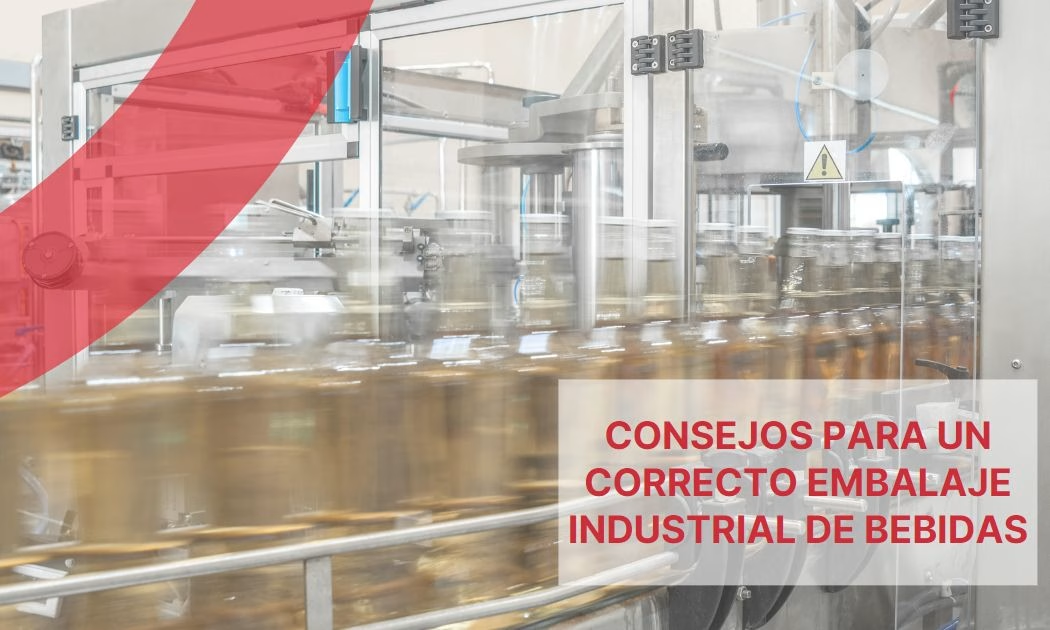Industrial beverage packaging has its own specificities, so it’s important to know what you need to consider for success. Want to know more? Keep reading!
Industrial beverage packaging: what you need to know
Industrial packaging of beverages (or other liquid foods) is generally more complex than packaging for other goods. Not surprisingly, you often have to group different units with primary packaging and then palletize them.
This makes it a job that requires specialized, fast-working machinery to keep costs down. And here, automatic stretch wrapping machines [MM1] fulfill their purpose by reducing costs and guaranteeing a professional result. Ultimately, if you’re involved in industrial production or distribution, this is the preferable option for several reasons.
In recent years, factories and distributors have turned massively to stretch wrapping machines. For this reason, having this machinery for your daily work becomes a daily priority, and it will help you.
Now, beyond using the right machinery, you do need to take some measures. These are the most important:
1. Clearly determine batches, packages, and volumes
First, you need to be clear about certain logistical issues. First, the quantity of each batch of product. Second, how you will package or distribute them, and related to this, the volume of each pallet.
While these issues are always important, they are even more so when it comes to beverages. These are bulky products, and a small mistake can break a bottle and cause the pallet to be rejected at its destination. Therefore, the packaging material must be airtight, precisely to avoid this eventuality.
Consequently, before packaging, decide how much, how, and with what measurements. This will save you problems in the future. Other aspects, such as quantities and adjusted costs, will be taken into account here.
2. Check that the primary packaging is safe
Contamination of any food or beverage is lethal, which is why the choice of primary packaging is very important. It is important to choose safe materials that do not interfere with the liquid in any way.
Generally, glass, metal (certain non-contaminating metals), and cardboard are used for primary packaging. The truth is that, depending on each food or beverage, or the marketing you want to do, there will be an idea of what you can choose. Beforehand, it is essential that you know what chemical reactions can occur upon contact.
Furthermore, it is important to remember that the options for some packaging are limited and will depend on costs. For example, beverages are almost exclusively limited to glass and cardboard.
3. Make sure the packaging contributes to sales
Packaging must contribute to sales, or at least not deter potential consumers. The truth is that packaging, in itself, is a form of marketing. Therefore, it must be valued because it contributes to better results. Since it’s something that is applied initially, special care must be taken.
And how can you make the packaging contribute to sales? It depends on the case. Sometimes, it’s enough to use positive, neutral colors, or colors that don’t generate negative reactions. When using cardboard, you can add logos or symbols that help enhance a positive image of the beverage. In any case, this is an issue you can’t ignore because it will be part of your sales strategy.
And, of course, before you start packaging, decide how you’re going to do it, at least for a certain period of time. That way, you won’t have to assume additional costs that make the packaging less competitive.
4. Use a rotary ring wrapping machine [MM2]
Wrapping machines [MM3] are the best alternative for all types of goods, including beverages. Fortunately, specialized machinery is now available for this type of food. It offers several advantages:
- Custom wrapping capabilities. Therefore, you can adapt the packaging to the dimensions of the bottles or Tetra Brik cartons. It’s also important to remember that beverages can come in different formats, both rectangular and Bordeaux bottle designs. This is the perfect way to work on a daily basis.
- The tensioning capacity of the film, or EPS. This is another essential point, as it is essential for greater load stability. Automatically adjusting the grip is one of the advantages of this machinery, as it will make transport easier.
- It doesn’t generate film queues, thus avoiding damage to the load. Indeed, one of the benefits of professional palletizing is that there will be no return issues during gauge inspections. In the end, the difference compared to manual wrapping [MM4] is enormous, and it also provides greater safety.
- The number of pallets wrapped per hour is substantially higher than with other alternatives. Saturn machines [MM5] have capacities of between 45 and 160 pallets per hour. Therefore, depending on the company’s characteristics, you can opt for faster or slower machines.
Using a wrapping machine [MM6] will undoubtedly substantially improve the quality of the packaging. And, of course, it will provide better service to the public.
5. Use materials that prevent content leakage
Using a material that prevents content leakage is essential. And, in this regard, good wrapping [MM7] and reliable secondary packaging will help. Therefore, complex packaging will help reduce the likelihood of problems.
The minimum is usually two layers, and sometimes it’s better to opt for three. As a general rule, film is an interesting material for a second layer of protection. If it’s of good quality, it will effectively perform that function.
Conclusion
Industrial beverage packaging, being more complex, requires strict protocols and the use of specialized machinery. Are you looking for an industrial machinery supplier that offers guarantees? At Movitec, we have beverage wrapping machines. Contact us to learn more!
